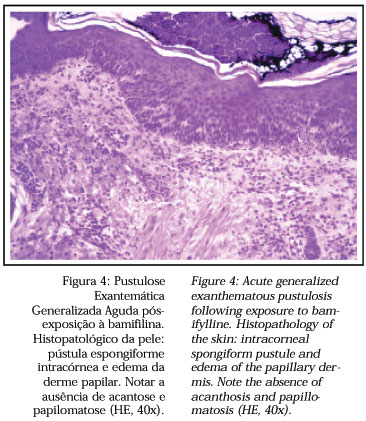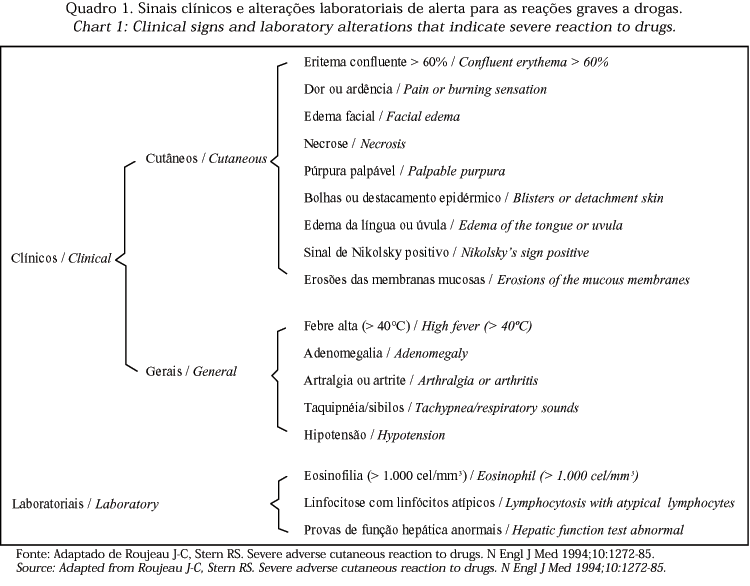Severe cutaneous adverse drug reactions generally require hospitalization, sometimes in intensive care or burns units, for observation of the vital signs and the visceral function. The objective was to describe these reactions in order to facilitate recognition and treatment. This group of drug reactions includes drug hypersensitivity syndrome (DHS), acute generalized exanthematous pustulosis (AGEP), anticoagulant-induced skin necrosis, small-vessel vasculitis (SVV), propylthiouracil hypersensitivity vasculitis and serum sickness disease. DHS has been most relevant due to universal prescription of aromatic anticonvulsant drugs and dapsone use in the treatment of some diseases such as acne and leprosy. AGEP is mostly induced by b-lactam related drugs and presents similar clinical characteristics as generalized pustular psoriasis, thus these must be differentiated. SVV can present an occult systemic illness, with impairment of relevant internal organs, such as kidneys, lungs and hematological system, with elevated morbidity and risk of death.
serum sickness; exanthema; hepatitis, chronic; drug hypersensitivity; pharmaceutical preparations; vasculitis







